
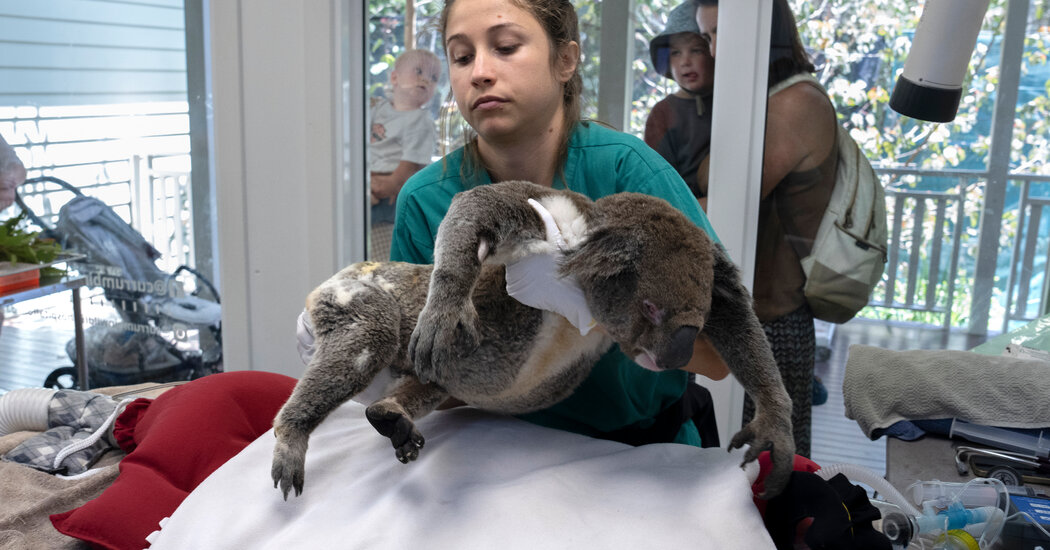
It was spring in Queensland, Australia, a season when many wild animals find themselves in trouble, and the Currumbin Wildlife Hospital was a blur of fur and feathers.
A groggy black swan emerged from the X-ray room, head swaying on its long neck. A flying fox wore a tiny anesthetic mask. An injured rainbow lorikeet squawked in its cage. (“Very angry,” a sign warned.)
“We see everything,” Dr. Michael Pyne, the hospital’s senior veterinarian. Also on the schedule for the day: three eagles, two carpet pythons, a blue-faced honeyeater, a short-eared brushtail possum and, Dr. Pyne said, “a whole heap of koalas.”
More than a dozen koalas were convalescing in open-air enclosures, wrapping their woolly arms around the trunks of eucalyptus trees. The wards were often full; in 2023, the hospital admitted more than 400 koalas, a fourfold increase from 2010.
The surge has been driven largely by the spread of chlamydia, a devastating bacterial infection. But the hospital was also seeing more koalas with traumatic injuries, including those caused by cars and dogs. Starving, dehydrated koalas came in during droughts; burned koalas appeared after wildfires. Occasionally, koalas even turned up with injuries caused by cows.
“That’s why they’re endangered,” Dr. Pyne said. “Everything’s against them.”
The koala, long an Australian icon, has become an unfortunate emblem of the country’s biodiversity crisis. The animals are threatened by deforestation, climate change and infectious disease. Together, these forces put the koala at the real risk of extinction. Although koalas are notoriously difficult to count, populations in some places have plummeted by as much as 80 percent, scientists estimate.
“We don’t know what the threshold is where there’s a point of no return,” said Tanya Pritchard, the senior manager for species recovery and landscape restoration at the World Wide Fund for Nature-Australia. “So we do need to act pretty urgently.”
Scientists and conservation groups are giving the koala everything they’ve got. Some are pursuing traditional time-tested strategies, including the protection of koala habitats and the advocacy of tougher conservation laws.
Others are trying more experimental approaches, from koala probiotics to tree-planting drones. Many of these projects are in the early stages, and none represent a complete solution. But given the wide array of threats that koalas are facing, saving them might require deploying every available tool.
“At this point,” Ms. Pritchard said, “every koala counts.”
Here are some of the tools in development.
Chlamydia, a common sexually transmitted infection in humans, is also widespread in the animal kingdom. How koalas were first infected is unknown, but one possibility is that the marsupials picked up chlamydia from the feces of livestock.
The disease, which can spread through sexual contact and from mothers to joeys, has become staggeringly widespread in parts of Australia. Chlamydia can cause urinary tract infections, blindness and infertility, suggesting that koalas could be in even worse shape than their declining numbers would indicate. “How many of those koalas that are out there can’t breed anymore because chlamydia has made them sterile?” Dr. Pyne said.
Scientists are now collaborating with the Currumbin Wildlife Hospital in Currumbin, Australia, to test a new chlamydia vaccine in wild koalas. So far, the vaccine is producing “quite spectacular results,” said Ken Beagley, an immunologist at the Queensland University of Technology who led the development of the vaccine.
Across two ongoing studies, more than 300 wild koalas have been vaccinated, and many vaccinated females have gone on to have healthy joeys, some of which have now had joeys of their own, Dr. Beagley said. “It was far better than we expected,” he said of the outcome.
Still, it will be challenging to inoculate thousands of wild koalas with the current vaccine, which requires two shots given 30 days apart. So Dr. Beagley and his colleagues are developing a delayed-release vaccine implant, which could be injected under the skin when a koala receives its first shot. Over the course of several weeks, the small capsule would slowly absorb water and then burst, thus delivering the second dose.
Koalas are notoriously picky eaters with highly unusual tastes. “They feed on a really unpalatable diet of eucalyptus leaves, which is high in fiber, low in protein, high in toxins,” said Michaela Blyton, a molecular ecologist and microbiologist at the University of Queensland.
Living on eucalyptus requires a cooperative community of gut microbes, which help digest the leaves. Dr. Blyton’s work suggests that these microbial communities are so finely tuned that they may dictate which eucalyptus species, of the many that dot Australia, an individual koala can eat. That microbial specificity could explain why koalas are sometimes unable to diversify their diets, even in the face of starvation.
In a 2019 study, Dr. Blyton showed that she could shift koalas’ microbiomes, and expand their diets, by giving them fecal transplants from koalas that dined on a different type of eucalyptus. (To perform the transplant, Dr. Blyton packaged fecal samples from donor koalas in small capsules, which were administered orally.)
Now, she is hoping to use the same approach to maintain microbial equilibrium in koalas taking antibiotics, which are the frontline treatment for chlamydia. The drugs can throw the gut microbiome out of whack, prompting koalas to stop eating altogether, with sometimes fatal results. “It’s a hard ask to get the animal going again, and a lot of the time we just can’t,” said Dr. Blyton, who collaborates with Currumbin and other wildlife hospitals.
Dr. Blyton has developed a technique for freeze-drying fecal samples from healthy koalas, yielding shelf-stable capsules that can be given to koalas with chlamydia as a sort of oral probiotic. Unfortunately, early trial results suggested that administering the capsules was stressful for sick koalas. So Dr. Blyton is now trying to turn the freeze-dried fecal samples into a powder that could be added to other nutritional supplements the animals already receive.
Koalas — sedentary, tree-dwelling animals — are tricky to spot in the wild, adding to the challenges of tracking how their populations are faring, identifying critical habitats and safeguarding the animals from threats.
Grant Hamilton, a quantitative ecologist at the Queensland University of Technology, has developed a new koala-spotting system that is powered by artificial intelligence. A drone equipped with a thermal camera flies over the treetops, looking for pockets of body heat hidden under the canopy. Machine learning algorithms can quickly process this footage, tallying the koalas. The scientists then use statistical models to estimate the total koala population in a given area.
The scientists are now teaching local conservation groups how to fly the drones in their own neighborhoods. Dr. Hamilton and his colleagues will then analyze the data to help these organizations identify critical koala habitats that might benefit from protection or restoration. “We can use A.I. to help people to manage their backyards or their parks,” he said. “That’s a really exciting idea.”
The World Wide Fund for Nature-Australia, which is currently running a campaign to save or plant two billion trees by 2030, is experimenting with using drones for habitat restoration. Over the course of eight hours, a single tree-planting drone can rain some 40,000 seeds across the landscape.
Drones aren’t suited for all environments, but they offer a way to “scale up this work,” Ms. Pritchard said. “To me, it’s a little bit symbolic of our own plight,” she added. “If we can’t save the koala, as our most important and most loved species, what does that mean for our own situation and the health of our own habitats?”
Despite the threats they face, koalas do have one thing going for them. “They are one of the cutest animals on Earth,” said Dr. Romane Cristescu, a conservation ecologist at the University of the Sunshine Coast.
To harness the public’s natural affection for koalas, she and her colleagues are developing a suite of technological tools, including solar-powered, location-tracking ear tags, which send data to a mobile app. The app, which is still undergoing testing, aims to help Australians get to know the koalas that live in their neighborhoods — “where they go, who they meet, their children, their boyfriend,” Dr. Cristescu said. “We’re going to tell people, ‘Hey, look, that koala’s got a life.’”
Dr. Cristescu hopes that people who develop attachments to their local koalas will be more inclined to support conservation efforts and change their own behaviors, like choosing not to cut down the trees in their yards. “We have a lot more empathy for a koala that has a name and a story,” she said.
The app also encourages users to log koala sightings and to report sick koalas, data that can be sent to scientists and wildlife care teams, she said.
The ear tags could be used for other purposes, too, said Dr. Cristescu, who also leads a research program that uses trained dogs to sniff out koalas and koala scat. After Australia’s catastrophic wildfires in 2019 and 2020, her team used dogs and drones to find and rescue injured koalas. The location-tracking ear tags could provide a quicker way to find koalas in danger, she said.
24World Media does not take any responsibility of the information you see on this page. The content this page contains is from independent third-party content provider. If you have any concerns regarding the content, please free to write us here: contact@24worldmedia.com

National Academy Asks Court to Strip Sackler Name From Endowment

Ways Industrial Copper Helps Energy Production
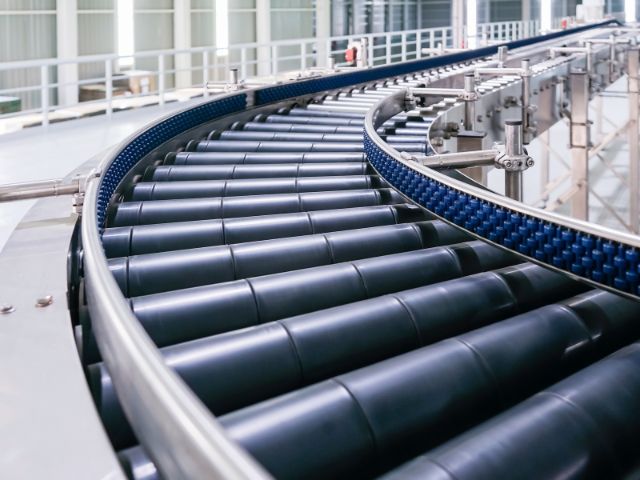
The Ins and Out of Industrial Conveyor Belts
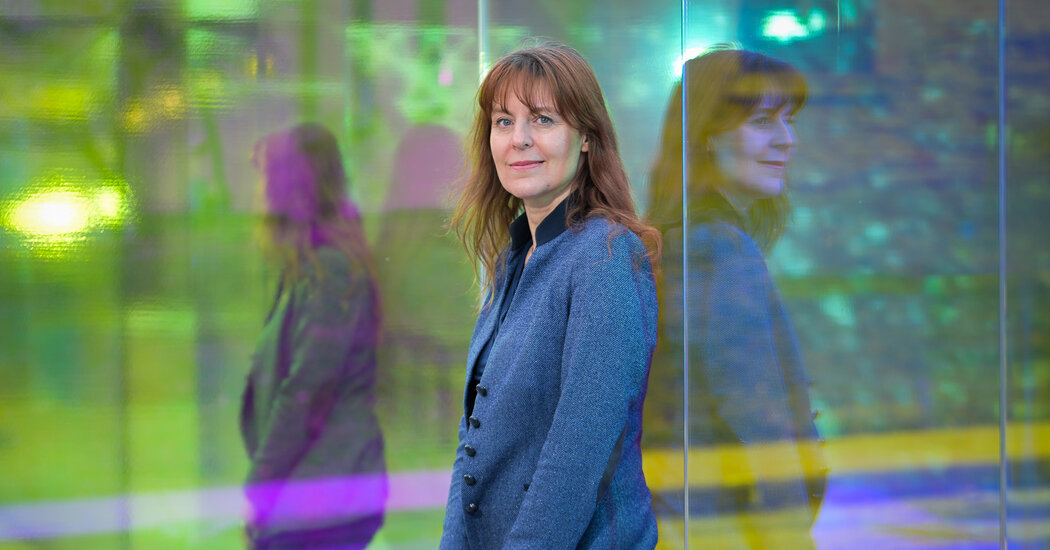
She Dreams of Pink Planets and Alien Dinosaurs
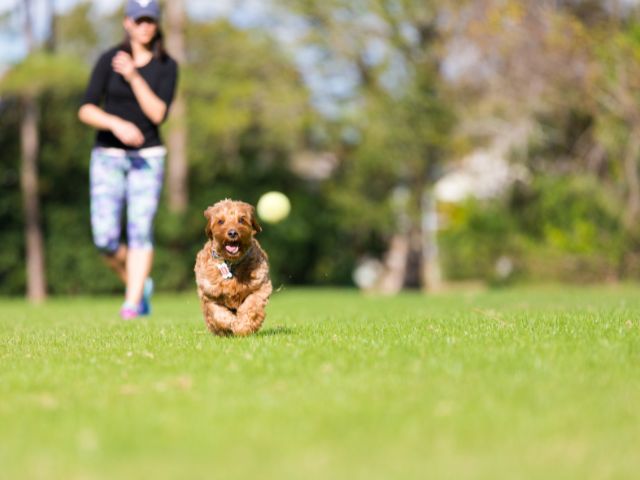
Why Your Family Should Play With Your Pet Outdoors
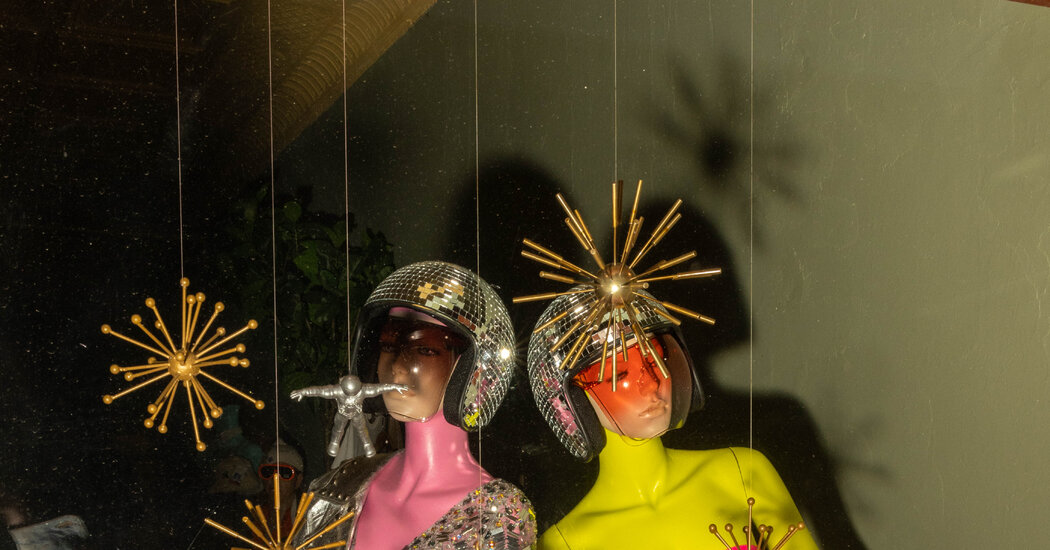
Arkansas Braces for Flood of Tourists During Total Solar Eclipse

New England Journal of Medicine Ignored Nazi Atrocities, Historians Find
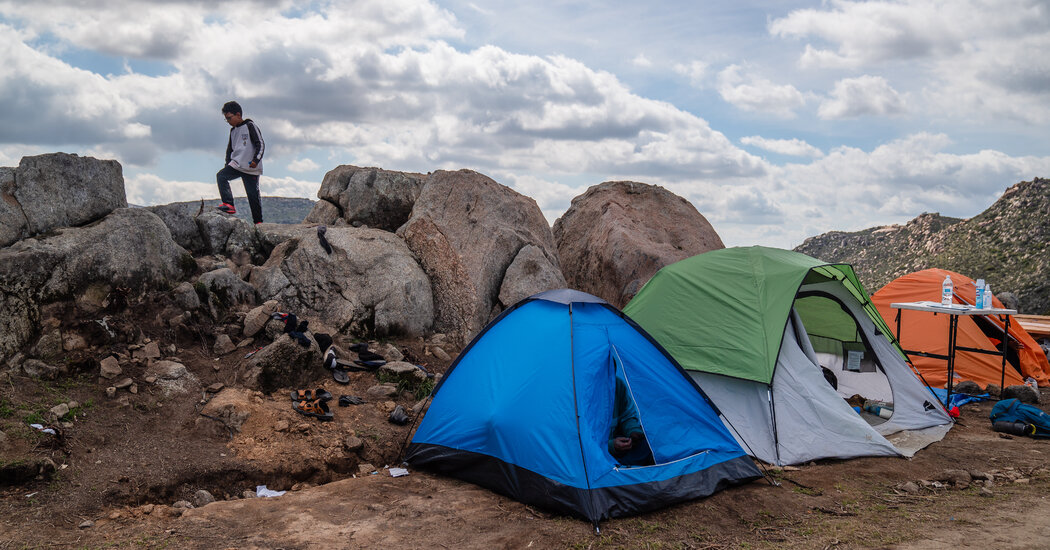
Judge Orders Timely Housing for Migrant Children Waiting at Border

Community calendar: April 4, 2024

Real Estate Transfers: April 4, 2024
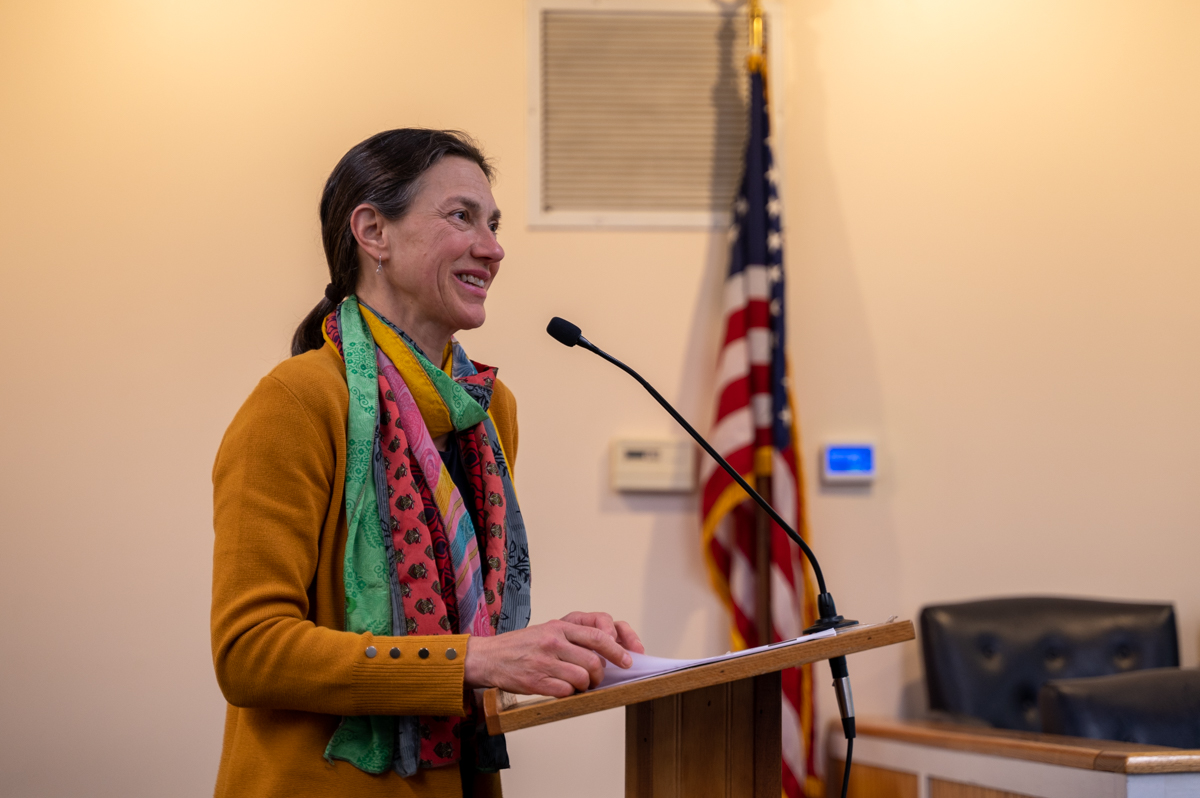
Southold closes affordable housing loopholes

North Shore Music Theatre set to present an expanded 2024 musical season